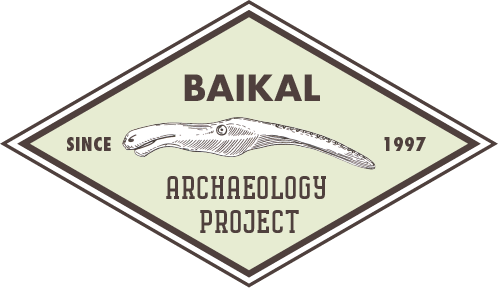Congratulations to Mr. Vladimir I. Bazaliiskii on the recent publication of his article in Bulletin of the Irkutsk State University (Geoarchaeology, Ethnology, and Anthropology Series) 2021 [in Russian]!
Title: Morphological Analysis of the Bone Serrated Points from Early Neolithic Complexes of Shamanka 2 Burial Ground
Authors: Bazaliiskii VI, Tyutrin AA, Weber AW
Abstract: An analysis of the bone serrated points from the burial complexes of Shamanka 2 burial ground is presented. The origin of the collection makes it “ritual”, which may explain the large number of undamaged items. Several spikes have been broken intentionally at the time of their interment. Supposedly, several points have been specifically made for interment. In accordance with the morphological analysis, we have identified two groups of serrated spikes: (I) detachable tools and (II) non-detachable tools. Differences in structural elements of the stopper-line determine 7 types of harpoons (95 items), and variations in base structure define 2 types of points of leisters, javelins, spears etc. (6 items), while 15 fragments of blade were excluded from the analysis. Harpoons of the Type I-1 and Type I-2 are divided into 9 varieties, in accordance with structural elements of the blade. Harpoons of the Type I-3 are divided into 2 subtypes due to differences in structural elements of the shaft. Harpoons of the I-4 – I-7 types are represented by only 1 item for each type and are considered to be individual tools.
Group I (harpoons) consist mostly of tools with an orifice for line lashing (89 items). Harpoons that feature stopper-line structural elements without through hole are represented here by only 6 items. II-2 type points with a unilaterally beveled base represent most non-detachable barbed tools – 5 items. II-1 type points with a wedgelike base (in a profile) consist of only 1 item. The designated types and varieties of Shamanka II cemetery barbed spikes correlate with items from different synchronous and asynchronous sites of both bordering and substantially remote regions. Serrated points are found mainly in male burials but absent in children’s burials. Chronologically, 111 barbed spikes relate to the Phase 1 of the Shamanka 2 cemetery functioning. Five more spikes were recorded in 3 burials of the Phase 2. Barbed spikes of the chronological Phase 2 are represented with 4 items of the I-1.4 variety from burials No. 108-1 and 64-2, as well as 1 item of the I-2-1 variety from a grave No. 49. The last artifact probably represents an ideal model of two-row harpoons with symmetrically situated barbs and a sword-like spike. Harpoons with a curved blade (Type I-1.4) were registered only in burials of the chronological Phase 2. The barbed spikes of the I-1 and I-2 types, which feature a stopper-line with through holes and lateral projections, correlate with a definition of harpoons of the Kitoi type.
Аннотация. В настоящем исследовании представлен морфологический анализ одной из наиболее многочислен-ных категорий сопроводительного инвентаря ранненеолитической группы погребений могильника Шаманка II – зубчатых остриев. Подробно рассмотрены конструктивные элементы этой категории орудий. В процессе морфо-логического анализа выделены группы, виды и варианты изделий, представлена характеристика метрических параметров, рассмотрено распределение выделенных групп, видов и вариантов по погребальным комплексам. Выдвинуто предположение, что коллекция имеет преимущественно ритуальное значение, что может объясняться большим количеством неповрежденных предметов. Несколько шипов умышленно сломаны во время погребения. Некоторое количество орудий, вероятно, было специально изготовлено для совершения захоронений.
Congratulations to Mr. Bazaliiskii and all co-authors!


